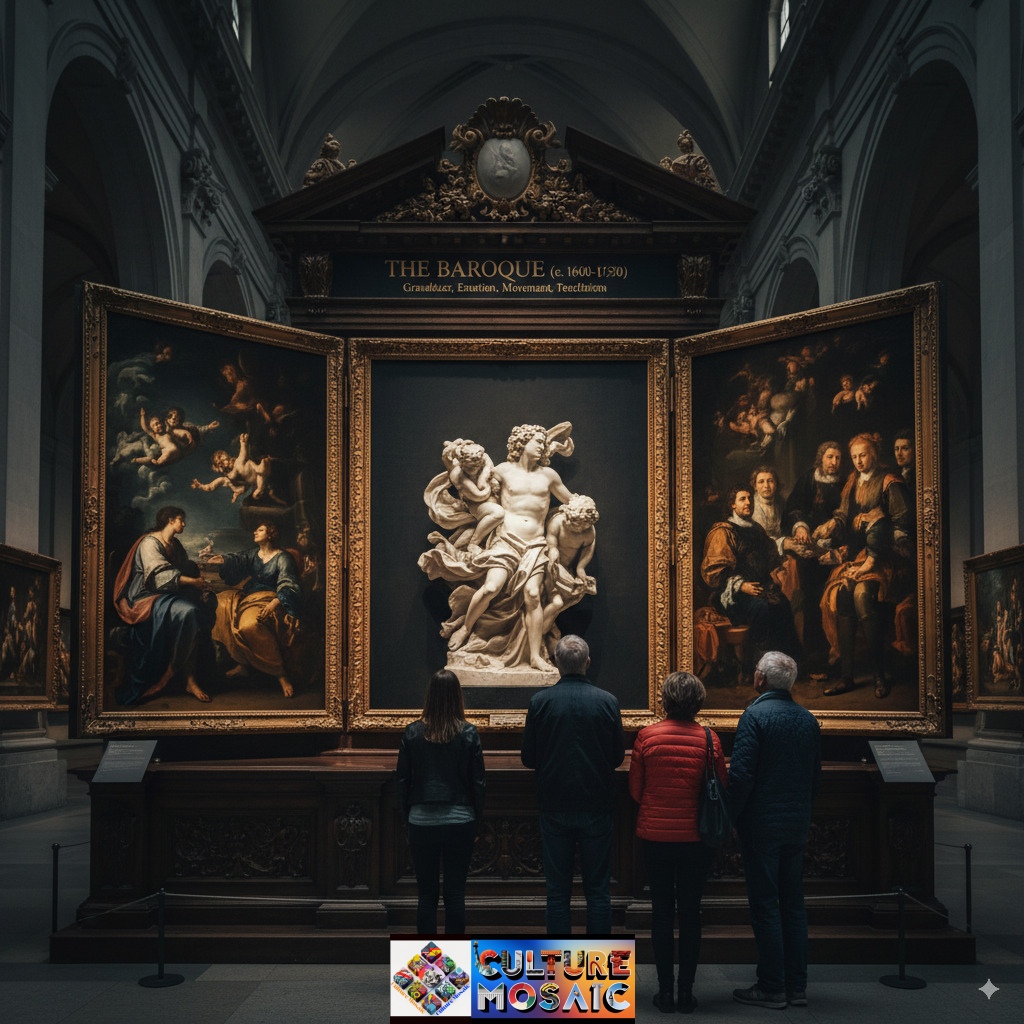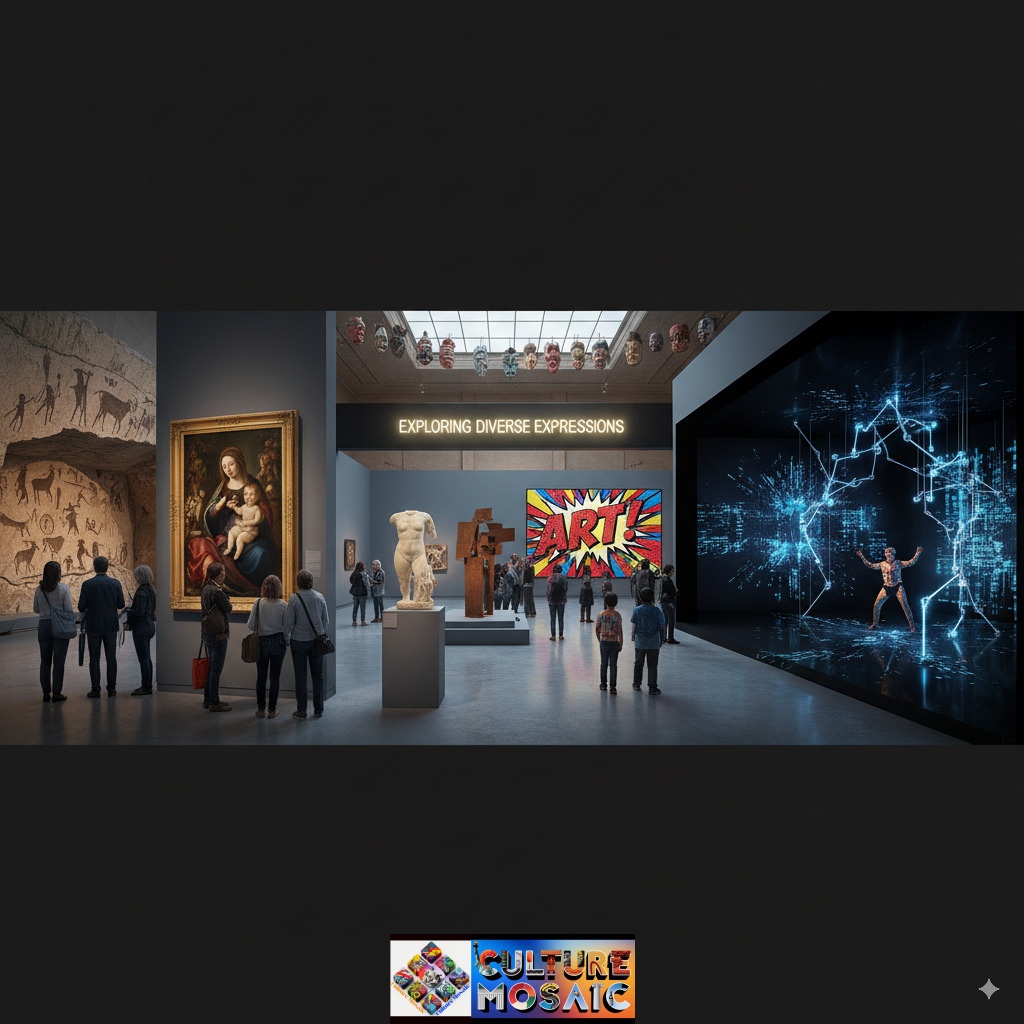Exploring the Diversity of Artistic Expressions
Art has always been humanity’s most powerful language. From cave paintings to digital installations, each era has produced artistic expressions that reflect cultural identity, emotions, and innovation. This section explores the movements, techniques, and visionaries that have shaped art across the world.
What Defines Artistic Expression?
When we’re discussing works of art, we’re actually describing the essence of how individuals express themselves from the inside out through creative expression. It’s not merely painting a subject or carving a form; it’s how an artist employs form, color, line, and other aspects to communicate concepts, emotions, or narratives. Imagine it as a connection between the artist’s brain and the audience’s experience.

Fundamentally, artistic expression is about communication and intention. An artist may take inspiration from their own experiences, such as happiness or sadness, or more universal themes of social injustice or the beauty of nature. What makes it special is that it is subjective—what one individual perceives as a messy wash of color, another may view as a reflection on the uncertainty of life.
Diversity is important here as well. Artistic works are not restricted to conventional canvases; they encompass music, dance, literature, and even cuisine. In the visual arts, for example, brushstrokes or digital processing create infinite possibilities. The focus is on authenticity: genuine artistic expression finds its source in a genuine place, and the caller invites the listener, questioner, or inspirer to connect.
The Evolution of Art Movements (Renaissance to Contemporary)
Art has not remained constant across the centuries; it changes with society, technology, and ideas. Let us follow this path from the Renaissance to today’s contemporary world, observing how artistic developments have undergone changes.

The Renaissance, beginning in the 14th century in Italy, was a revival of classical ideals. Artists such as Leonardo da Vinci and Michelangelo concentrated on realism, anatomy, and perspective. Their paintings, including the Mona Lisa or the ceiling of the Sistine Chapel, focused on harmony and proportion, a humanistic philosophy expressing the potential of individuals.
Moving into the 19th century, Romanticism emphasized emotion. Artists such as J.M.W. Turner recorded dramatic seas and skies, invoking artistic responses to elicit awe and the sublime force of nature. It was a response to the cold machinery of the industrial revolution.

Then Impressionism emerged in the late 1800s, as artists such as Claude Monet painted en plein air to record light’s ephemeral effects. Their loose brushwork and colors accelerated over strict studio traditions, affecting how we perceive mundane views as deserving of art.
The 20th century burst with modernism. Cubism, pioneered by Pablo Picasso and Georges Braque, broke objects apart to represent multiple perspectives at the same time. This opened the door to abstract art, where expression was not about rendering reality but discovering pure form and color.
Now, modern art mixes it all—digital media, installations, and performance. Artists address worldwide problems such as climate change or identity, applying mixed media to make interactive experiences. This transformation depicts the way creative expressions evolve, always reflecting the complexities of the world.
Elements of Surrealist Art Explained
Surrealism emerged in the 1920s as a way to tap into the unconscious mind, inspired by dreams and Freud’s theories. If you’ve ever seen a melting clock or a floating apple, that’s Surrealism in action—artistic expressions that challenge logic and invite the bizarre.
Salient elements are juxtaposition, wherein unconnected objects are combined to generate surprise. Salvador Dalí’s “The Persistence of Memory” is a prime example with melting watches hanging over desolate expanses, representing the fluidity of time.

End is automatism, a method wherein artists allow their hands to go about freely without intentional control, such as in André Masson’s sketches. This releases the subconscious, resulting in forms that are unpredictable.
Symbolism is massive as well; ordinary objects carry deeper significance. René Magritte’s “The Son of Man,” featuring a man with an apple covering his face, challenges identity and perception.
Surrealists also experimented with scale and perspective, warping reality to provoke discomfort or amazement. Women such as Frida Kahlo integrated personal surrealist elements, combining autobiography with dreamlike images. In general, Surrealism’s components challenge artistic works to transcend the rational, prompting us to delve into repressed ideas.
Abstract Expressionism: Breaking Boundaries
During the mid-20th century, Abstract Expressionism dominated New York, relocating the center of art from Europe. The movement was all about emotion and spontaneity, employing artistic expressions to evade conventional representation.
Painters such as Jackson Pollock led the way with action painting, splashing and dripping paint onto canvases placed on the floor. His “Number 1A, 1948” is chaotic but controlled, reflecting the physicality of the artist. It’s not concerned with painting a picture; it’s concerned with the process of creation.
Color field painters, including Mark Rothko, relied on broad expanses of color to create mood. His patches of deep reds and blues beckon contemplation, evoking subconscious reactions.
What was groundbreaking about Abstract Expressionism was that it was about individualism during post-World War II uncertainty. Women like Lee Krasner brought dynamic layers, not always given credit but equally important to the movement.
This aesthetic was impacting everything from graphics to therapy, demonstrating the ways in which artistic works could heal and disturb. A reminder that art does not have to “look like” something in order to be effective.
Global Street Art and International Voices
Street art has evolved from vandalism to an accepted method of artistic expression, with global voices being given a voice to the marginalized across the planet. It’s public, it’s accessible, and frequently political, and turning city walls into change canvases.
Stencils are used by the reclusive British artist Banksy to create speedy, ironic works. His “Girl with Balloon” is a reflection on love and loss, as pieces from zones of conflict emphasize the absurdity of war.
Murals created by artists such as Diego Rivera in Latin America inspired contemporary artists. Brazilian street artist Eduardo Kobra creates colorful portraits of icons such as Einstein today, combining hyperrealism with geometric motifs to honor diversity.
Africa’s landscape is also thriving. South African Faith47 uses human and wildlife forms to speak to the environment, her work covering abandoned buildings.
Around the world, street art speaks louder about feminism, racism, and inequality. Events such as Miami’s Wynwood Walls celebrate this, where murals change with social media’s reach. It’s democratic—you don’t need to be somebody; anyone with spray paint can chip in, making art truly inclusive.
Featured Artist Profiles
Let’s highlight some visionaries whose artistic works have made lasting contributions.
- Frida Kahlo (1907-1954): Famous for her self-portraits, Kahlo merged Mexican folk art with Surrealism. Pieces such as “The Two Fridas” delve into identity and suffering from her medical ailments, employing vibrant colors and symbolism to express strength.
- Jean-Michel Basquiat (1960-1988): Emerging during 1980s New York, Basquiat’s graffiti background developed into neo-expressionist works. His wild canvases, covered in crowns, text, and anatomical studies, addressed race, celebrity, and history.
- Yayoi Kusama (1929-present): The Japanese artist’s infinity rooms and polka-dot pumpkins evoke immersive environments. Her art derives from hallucinations, translating personal fixations into universal works of art concerning infinity and self-erasure.
- Ai Weiwei (b. 1957): This Chinese dissident employs installation and sculpture to challenge power. His “Sunflower Seeds” at Tate Modern represented mass production and the individual, mixing activism with art.
These profiles reflect the individual stories behind artistic works, inspiring future generations.
FAQs on Artistic Expressions
How is artistic expression different from creativity?
Creativity is the spark of original ideas, and artistic expression is the way you express that into a material form, such as a picture or poem, in order to communicate something to other people.
How do I begin to discover my own artistic expressions?
Keep it simple: draw every day, play around with color, or write out ideas in pictures. Perfection is not necessary—just engage with what feels true to you.
Why do artistic expressions vary across cultures?
They reflect unique histories, values, and environments. For example, Japanese ink wash painting emphasizes simplicity, while African masks highlight community rituals.
Can digital art be considered a valid artistic expression?
Absolutely. Tools like Photoshop or VR allow for innovative expressions, expanding boundaries just as photography did in the past.
How has technology influenced modern artistic expressions?
It’s democratized access, enabling AI-generated art or interactive installations. Artists now blend code with traditional media for hybrid experiences.
What role do artistic expressions play in society?
They foster empathy, challenge norms, and preserve culture. Art can spark conversations on tough topics, helping societies evolve.

